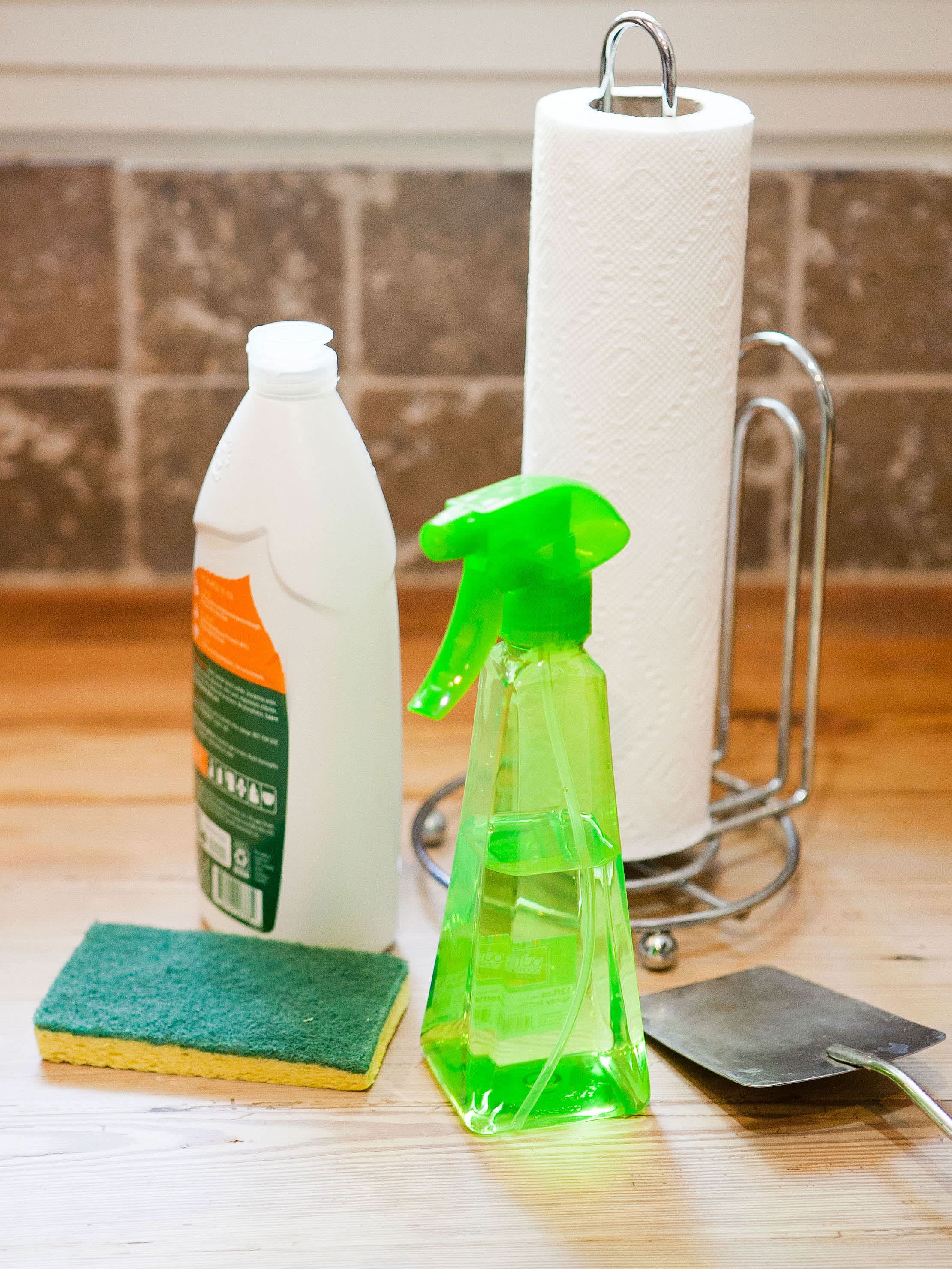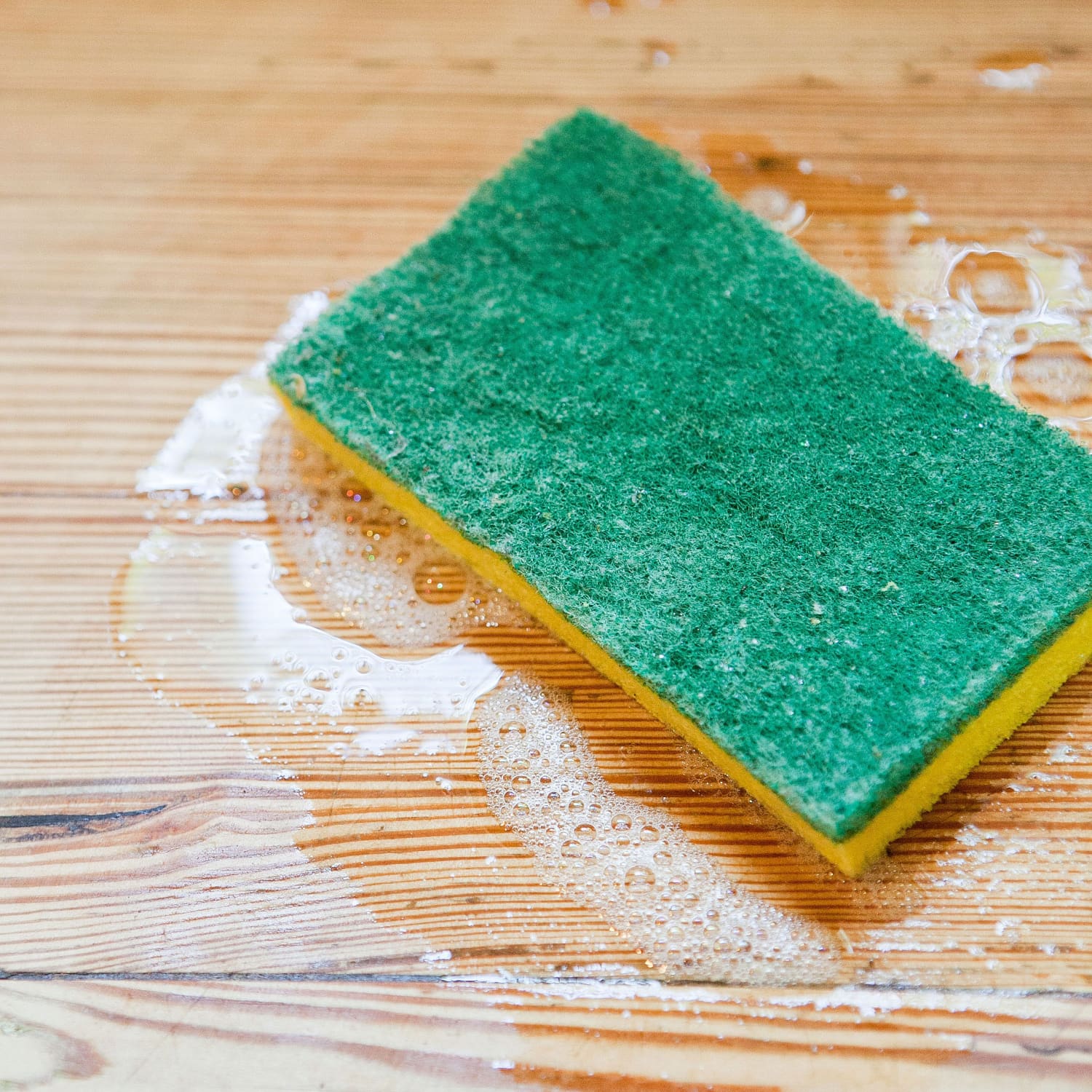Maintaining butcher block countertops is essential for preserving their beauty and functionality over time. These countertops, made from hardwood, are both aesthetically pleasing and durable, but they do require regular care to keep them in prime condition. I’ve found that the key to cleaning butcher block countertops is understanding the type of wood used and the finish applied. Typically, butcher blocks are either sealed or unsealed, and this distinction will guide your cleaning process. For sealed countertops, a simple solution of mild dish soap and warm water works wonders. You can easily wipe away daily spills and crumbs with a soft cloth. I recommend following the grain of the wood while cleaning to avoid scratching the surface. If your countertop is unsealed, a more careful approach is needed, often involving food-grade mineral oil or beeswax to maintain moisture and prevent cracking.
Over time, butcher block countertops can develop stains, scratches, or even slight warping if not properly maintained. To tackle stains, I’ve discovered that a mixture of baking soda and water can be incredibly effective. Apply the paste to the stained area, let it sit for a few minutes, and then gently scrub with a soft sponge. For more stubborn stains, adding white vinegar to the paste can provide additional cleaning power. It’s important not to use harsh chemicals or abrasive scrubbers, as these can damage the wood. For scratches, sanding the area with fine-grit sandpaper in the direction of the wood grain can smooth out imperfections. After sanding, reapply mineral oil or beeswax to restore the finish.
Butcher block countertops need regular conditioning to keep the wood from drying out, especially in high-use areas like kitchens. I like to use food-grade mineral oil because it’s odorless, tasteless, and safe for food preparation surfaces. You should apply a generous amount of oil to the countertop and let it soak in for several hours, or even overnight. Wipe away any excess oil with a clean cloth the next day. This process should be done monthly, or more frequently if you notice the wood looking dry or dull. Beeswax can also be used in conjunction with mineral oil for added protection. It creates a barrier on the surface that helps resist water and stains.
A common challenge with butcher block countertops is dealing with cuts and gouges from knives. While minor scratches can add character, deeper cuts should be addressed to prevent bacteria from settling in the wood. For deeper cuts, I recommend using a wood filler that matches the color of your countertop. After filling the cut, sand the area smooth and apply mineral oil or beeswax to seal it. Always use a cutting board to prevent further damage to your countertop. Also, be mindful of placing hot pots or pans directly on the wood, as this can cause burns or discoloration.

Water damage is another issue to watch out for, particularly around the sink area. Even though butcher block is a durable material, prolonged exposure to water can cause the wood to warp, swell, or crack. To prevent this, make sure to wipe up water spills immediately. I’ve found that using a waterproof finish in areas prone to water exposure, such as around the sink, can provide an extra layer of protection. If you notice any signs of water damage, such as dark spots or raised grain, sanding the affected area and reapplying finish can often restore the countertop to its original condition.
Regular cleaning and maintenance can prevent most issues with butcher block countertops, but if your countertop develops a foul odor, it’s likely due to bacteria trapped in the wood. I’ve successfully eliminated odors by cleaning the countertop with a mixture of water and white vinegar. The acidity of the vinegar helps kill bacteria without harming the wood. After cleaning, you can sprinkle baking soda over the countertop and let it sit for a few hours to absorb any remaining odors. Once done, wipe it away and condition the wood with mineral oil.
Butcher block countertops can also change color over time, either from exposure to sunlight or from food stains. While this is a natural process, it can be minimized by regularly oiling the countertop to keep the wood moisturized. If you notice discoloration, lightly sanding the surface and reapplying oil can often help restore the original color. For more serious discoloration, such as from deep stains, sanding may be necessary, followed by a reapplication of mineral oil or beeswax to protect the wood.

One of the things I love about butcher block countertops is their versatility. Not only are they functional, but they can also be refinished to look new again. If your countertop has seen better days, consider sanding it down to remove the top layer of wood. This will eliminate most surface imperfections, including scratches, stains, and minor burns. After sanding, you can choose to stain the wood if you want a different color, or simply reapply mineral oil to maintain the natural look. Refinishing your butcher block countertop can extend its life and keep it looking beautiful for years.
For those who use their butcher block countertops extensively, daily maintenance is crucial. I make it a habit to clean up spills immediately, avoid using harsh chemicals, and regularly condition the wood. This routine helps prevent most issues and keeps the countertop in great shape. I also recommend rotating the use of different areas of the countertop to avoid uneven wear. For example, if you always chop vegetables in one spot, try using another area occasionally to distribute the wear evenly across the surface.
If you’re dealing with persistent stains or odors, a deeper cleaning method may be necessary. I’ve had success using lemon juice and coarse salt to scrub the surface. The acidity of the lemon juice helps lift stains, while the salt acts as a gentle abrasive. After scrubbing, rinse the area with warm water and dry it thoroughly. As always, follow up with mineral oil to keep the wood conditioned. This method is particularly useful for removing stains from food or drink spills.
Butcher block countertops are also susceptible to changes in temperature and humidity, which can cause the wood to expand and contract. To minimize this, I recommend maintaining a consistent environment in your kitchen. Use a humidifier in the winter if the air is dry, and avoid placing your countertop near heat sources like ovens or dishwashers. If you notice the wood warping or cracking, it’s important to address the issue immediately by sanding and refinishing the affected area.
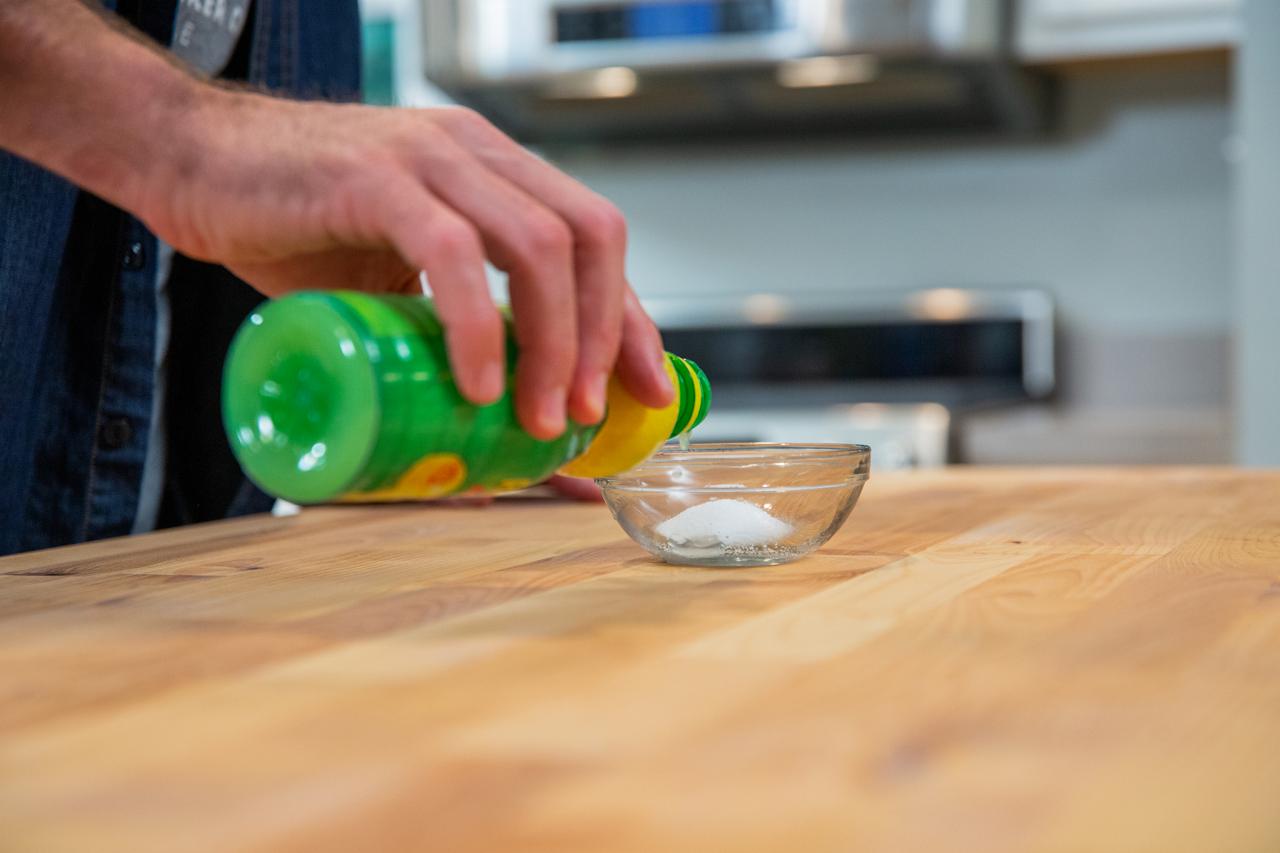
In terms of everyday use, I find it helpful to use trivets or hot pads under pots and pans to protect the wood from heat damage. Similarly, using placemats under dishes can prevent scratches and stains from food. These small steps can go a long way in preserving the appearance and functionality of your butcher block countertop. Remember, the goal is to prevent damage before it occurs, which makes the ongoing care of your countertop much easier.
When cleaning up after meals, it’s tempting to use a damp cloth and be done with it, but I’ve learned that drying the countertop thoroughly afterward is just as important. Excess moisture can seep into the wood and cause problems down the line. A dry cloth or paper towel can quickly absorb any remaining moisture, leaving your countertop clean and dry. This simple step is one of the best ways to prevent water damage and keep your butcher block looking its best.
Finally, if you notice your countertop looking dull or dry, it’s a sign that it needs conditioning. As I’ve mentioned, regular application of mineral oil is key to maintaining the luster and integrity of the wood. Don’t wait until the wood is cracked or split—by then, the damage may be more difficult to repair. Instead, make conditioning a regular part of your kitchen cleaning routine. It doesn’t take long and can save you a lot of trouble in the long run.
Common Mistakes to Avoid
Using Harsh Chemicals: One of the biggest mistakes you can make is using harsh chemicals to clean your butcher block countertop. These can strip the wood of its natural oils, leading to dryness and cracking. Stick to mild, natural cleaners that are safe for wood.
Neglecting Regular Maintenance: Many people forget to regularly oil their butcher block countertops. This leads to dryness, cracking, and even warping over time. Make it a habit to oil your countertop monthly to keep it in good condition.
Ignoring Water Spills: Leaving water spills on your countertop can lead to water damage, which is difficult to repair. Always wipe up spills immediately to prevent the wood from absorbing moisture.
Cutting Directly on the Surface: While it might be tempting to chop directly on your butcher block, this can lead to deep cuts that harbor bacteria. Always use a cutting board to protect the wood.
Exposing the Countertop to Extreme Temperatures: Placing hot pots or pans directly on the wood can cause burns and discoloration. Use trivets or hot pads to protect the surface.
Not Drying After Cleaning: After wiping down your countertop, it’s crucial to dry it thoroughly. Leaving moisture on the surface can lead to water damage and warping.

How often should I oil my butcher block countertop?
Oiling your butcher block countertop should be a regular part of your maintenance routine. I recommend applying food-grade mineral oil at least once a month. However, if you notice the wood looking dry or dull, it’s a good idea to oil it more frequently. Regular conditioning helps keep the wood moisturized, preventing cracks and maintaining its appearance.
Can I use vinegar to clean my butcher block countertop?
Yes, vinegar is a great natural cleaner for butcher block countertops. Its acidity helps kill bacteria and remove stains without harming the wood. I often use a mixture of white vinegar and water for a deep clean. Afterward, it’s important to dry the countertop thoroughly and apply mineral oil to replenish the wood’s natural oils.
What should I do if my butcher block countertop gets scratched?
Minor scratches can add character, but if you want to smooth them out, you can sand the area with fine-grit sandpaper. Always sand in the direction of the wood grain to avoid further damage. After sanding, reapply mineral oil to restore the finish. For deeper cuts, consider using a wood filler that matches your countertop’s color before sanding.
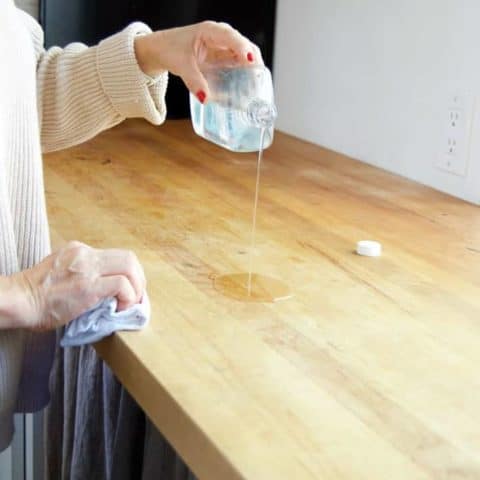
How can I remove stains from my butcher block countertop?
For most stains, a paste made of baking soda and water works well. Apply it to the stained area, let it sit for a few minutes, then scrub gently with a soft sponge. For tougher stains, adding white vinegar to the paste can help. After cleaning, always rinse the area with water, dry it thoroughly, and condition the wood with mineral oil.
Can I use my butcher block countertop as a cutting board?
While butcher block countertops are durable, it’s best to avoid using them as a cutting board. Cutting directly on the surface can lead to deep gouges that harbor bacteria and damage the wood. Instead, always use a separate cutting board to protect your countertop from cuts and scratches.
What should I do if my butcher block countertop starts to warp?
Warping can occur if the wood is exposed to excessive moisture or changes in temperature. To address warping, try sanding the affected area and applying a waterproof finish if necessary. It’s also important to maintain a consistent environment in your kitchen, avoiding extreme humidity or dryness. If the warping is severe, you may need to consult a professional for repair or replacement.
How to Clean Butcher Block Countertops (DIY) Family Handyman
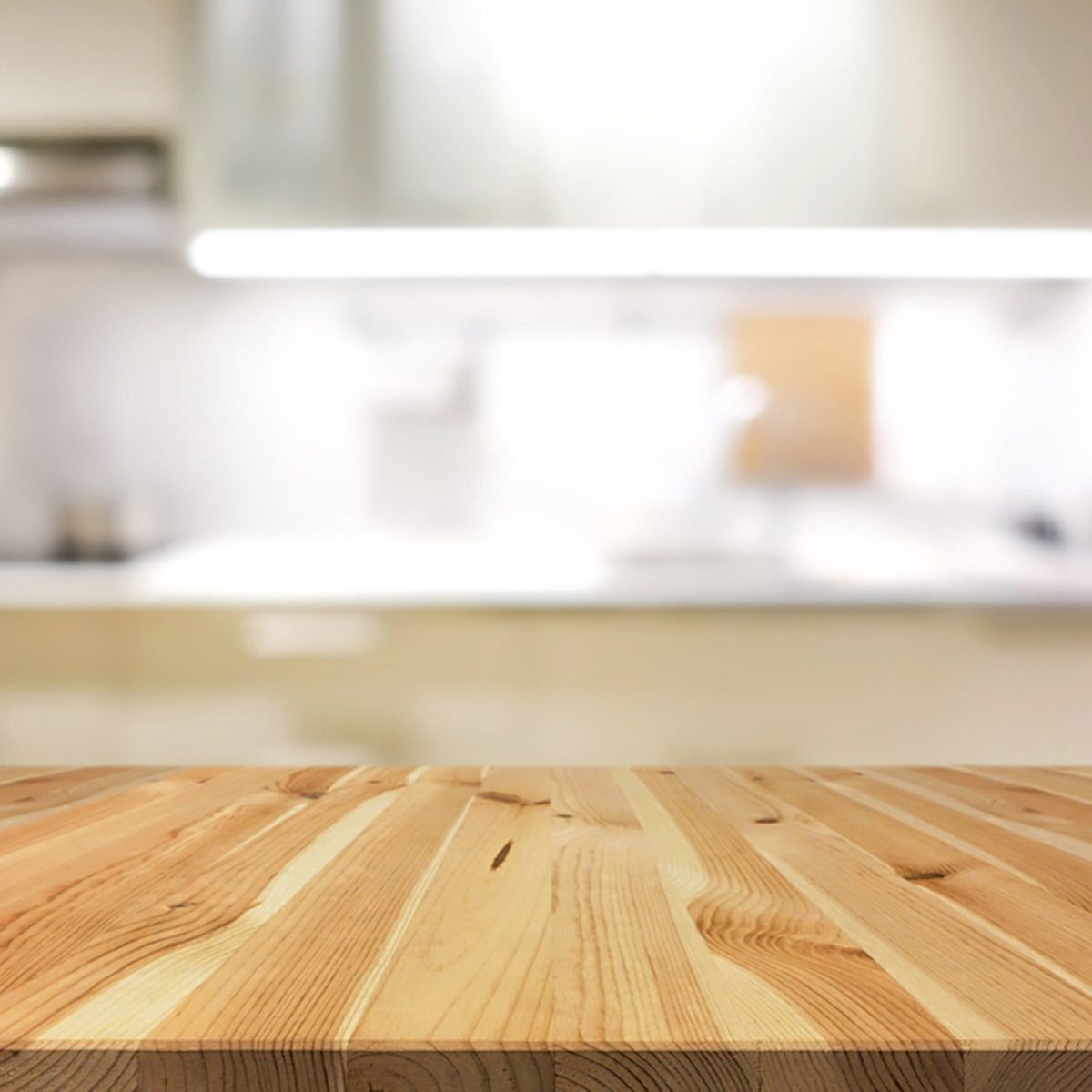
Related articles:
- Butcher Block Countertop For Kitchen Island
- Can You Paint Butcher Block Countertops
- Butcher Block Countertops With White Cabinets
- Pine Butcher Block Countertops
- Butcher Block Countertops Walnut
- Maple Butcher Block Countertops
- Care Of Butcher Block Countertop
- Butcher Block Countertops Maintenance
- Antique Butcher Block Countertops
- Butcher Block Countertop Sealing
